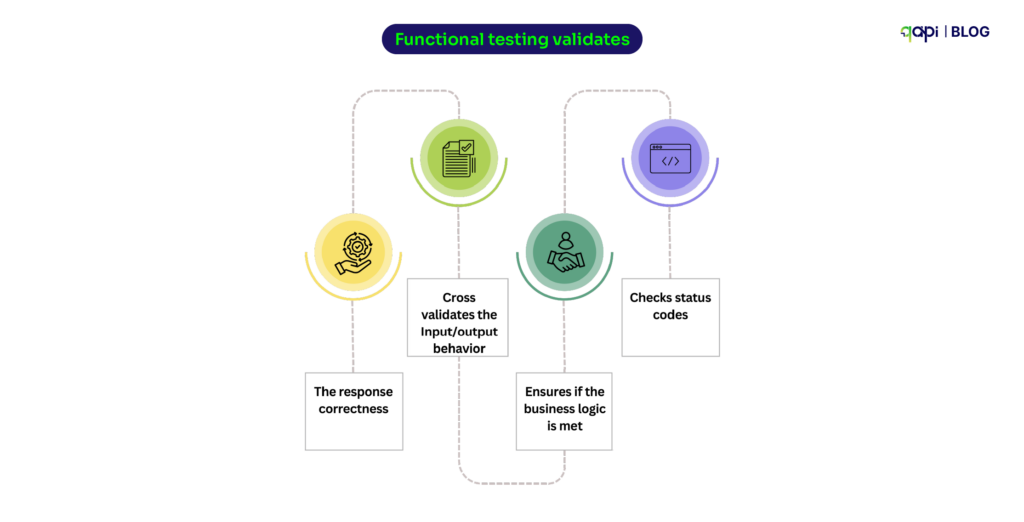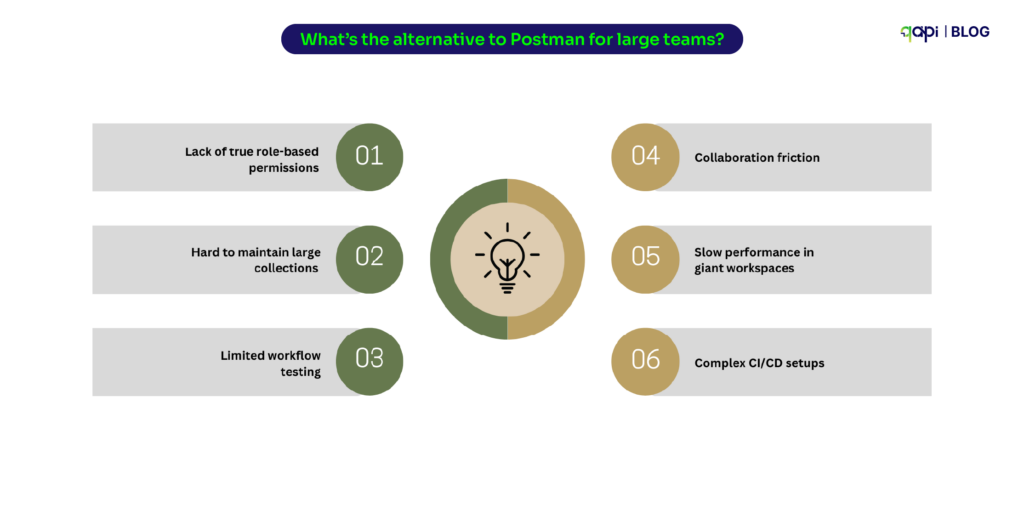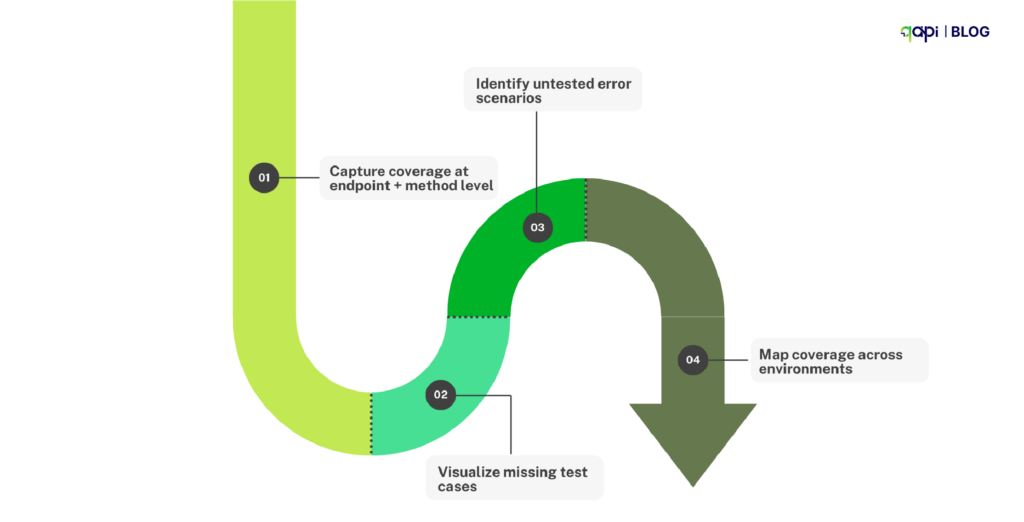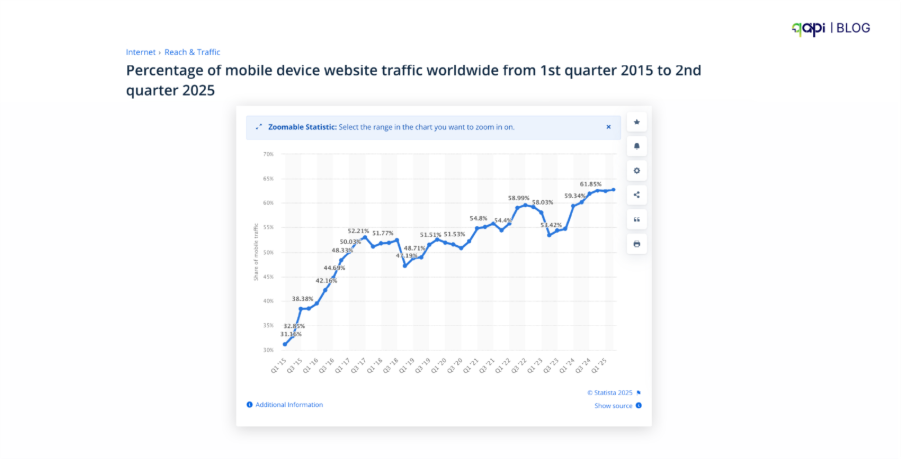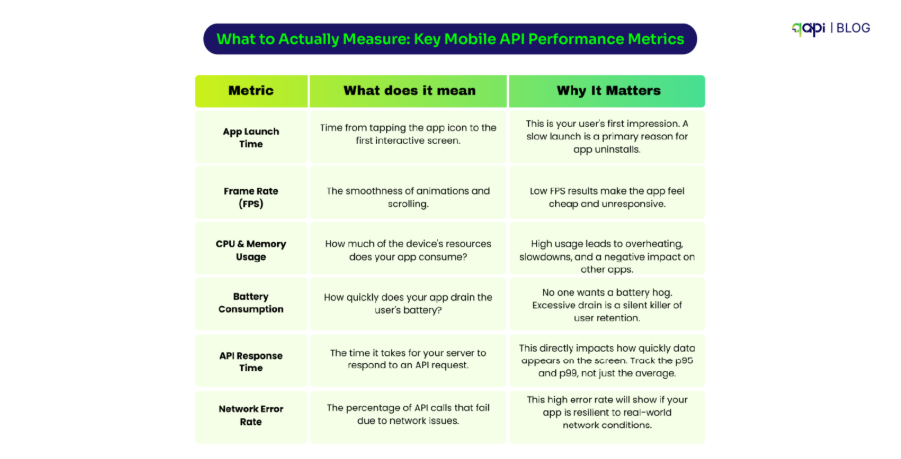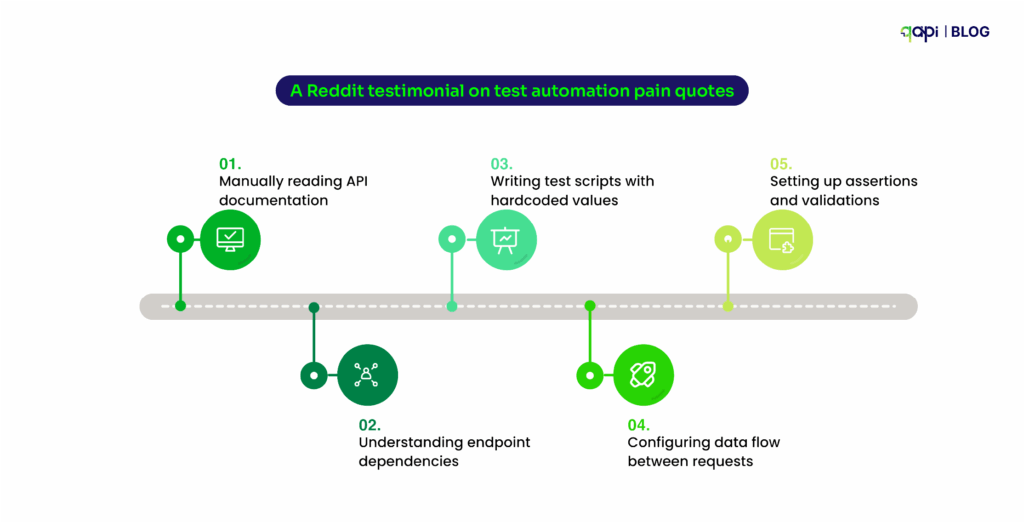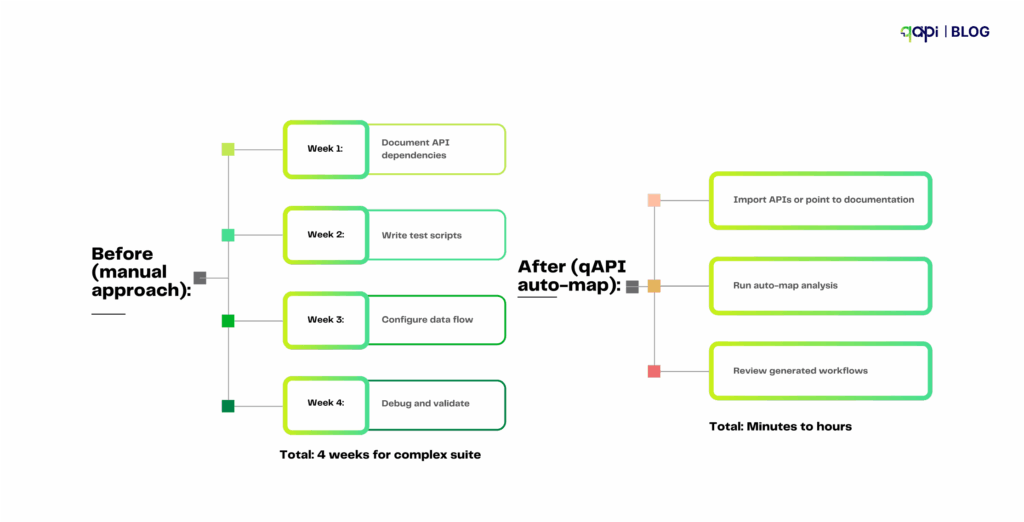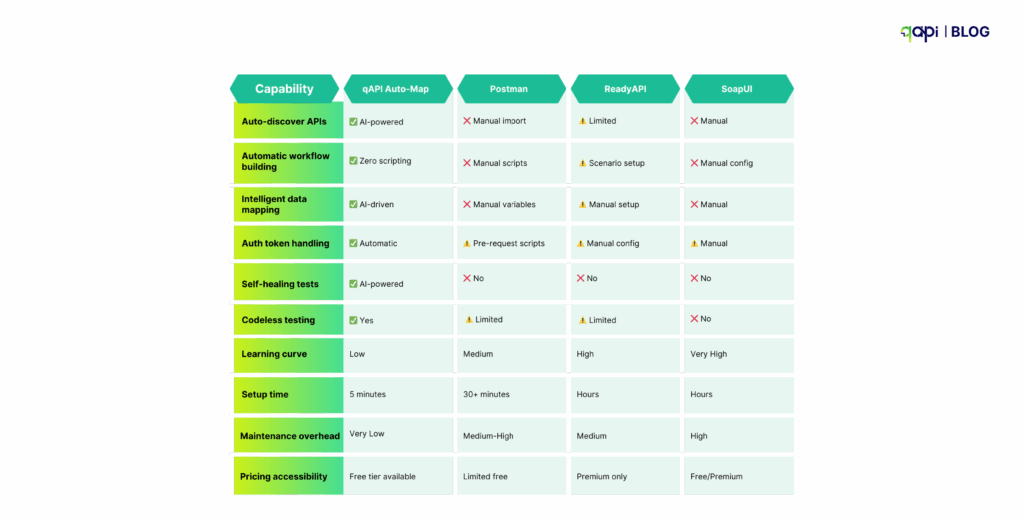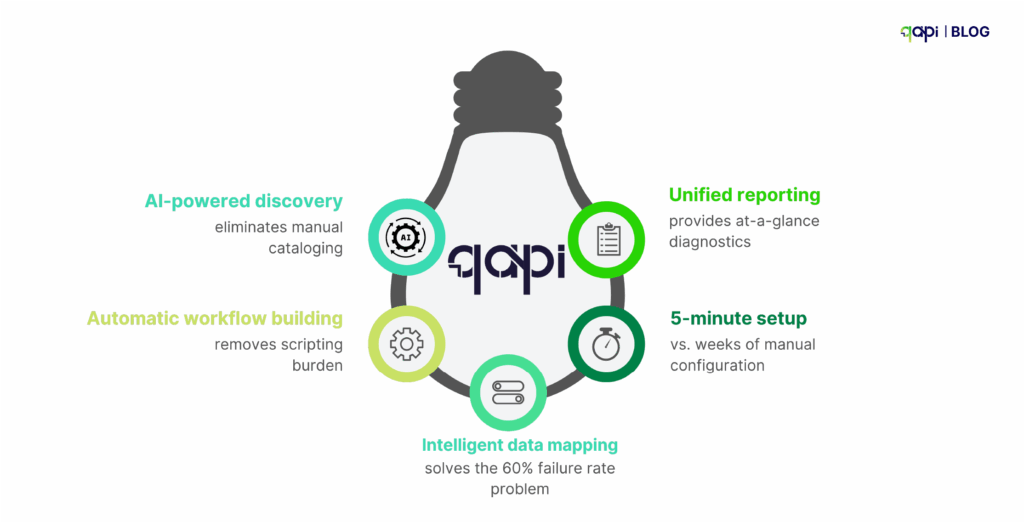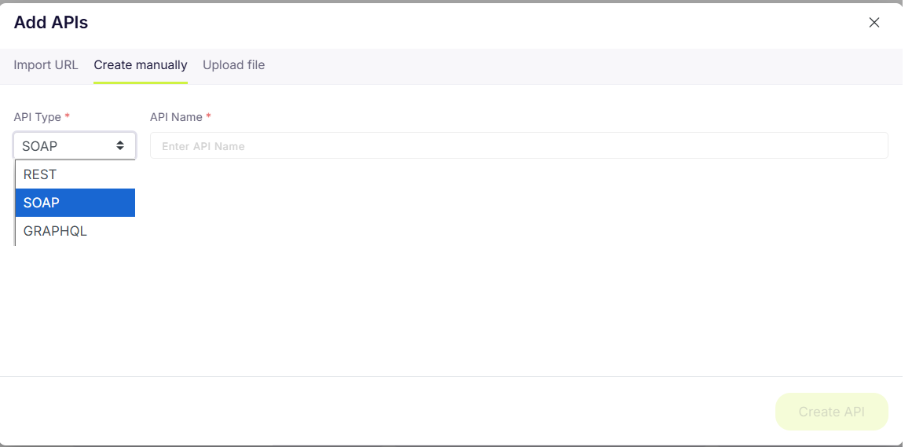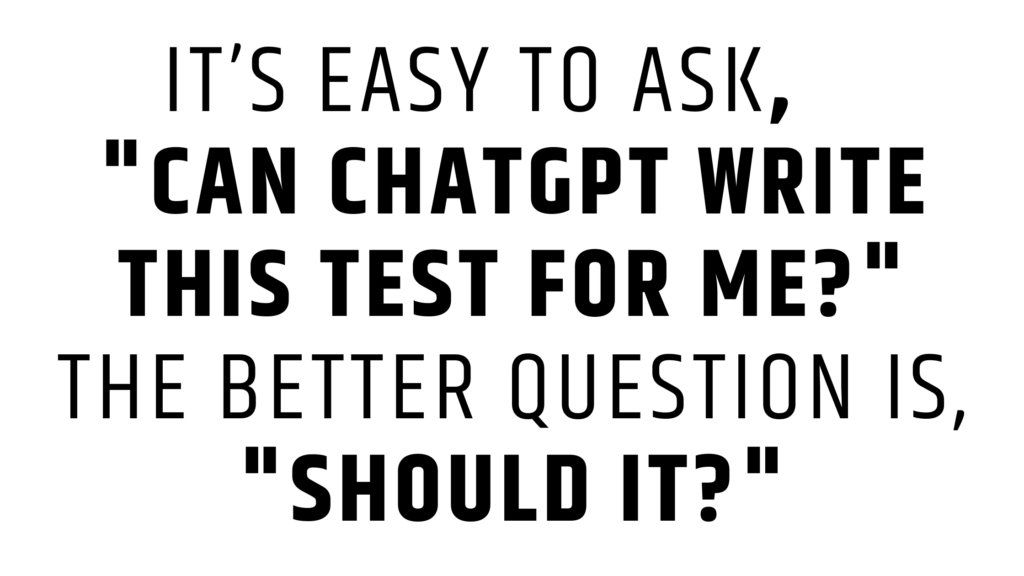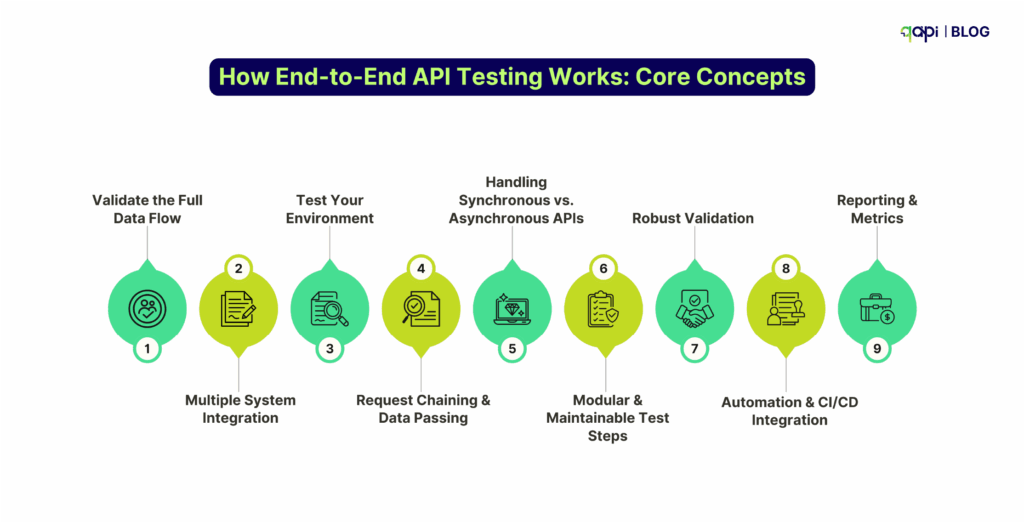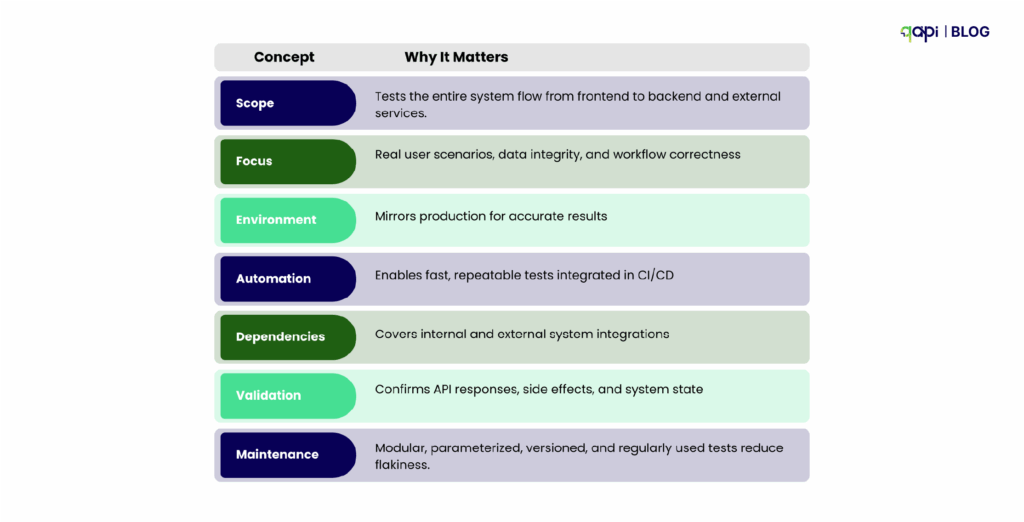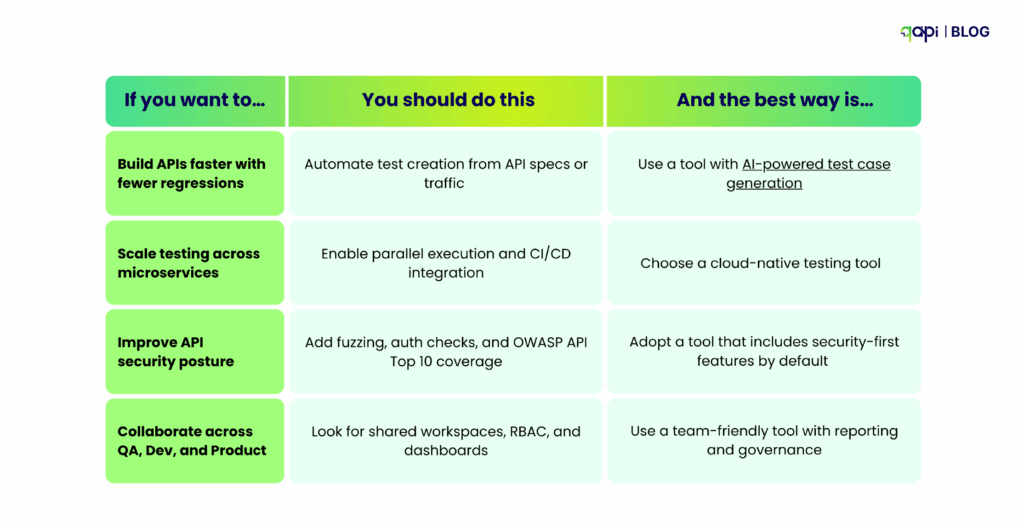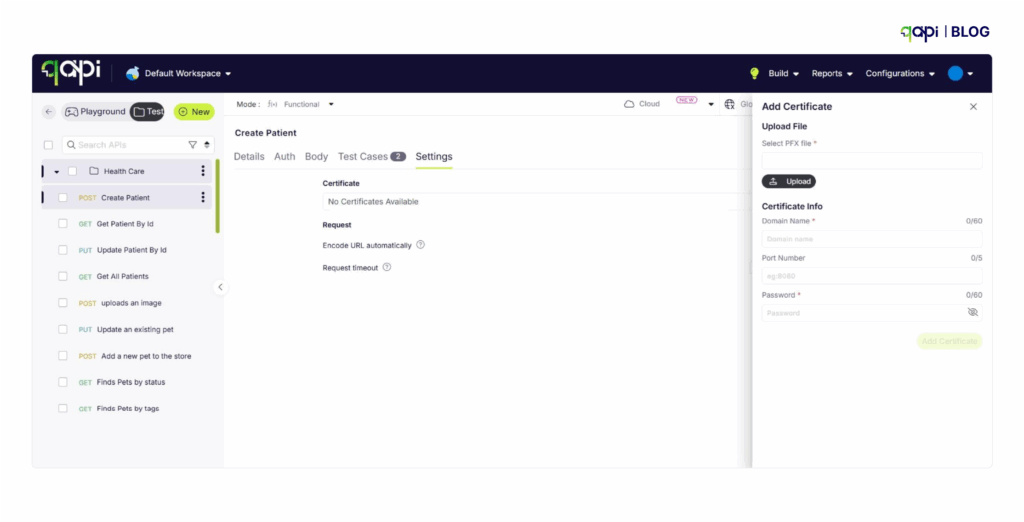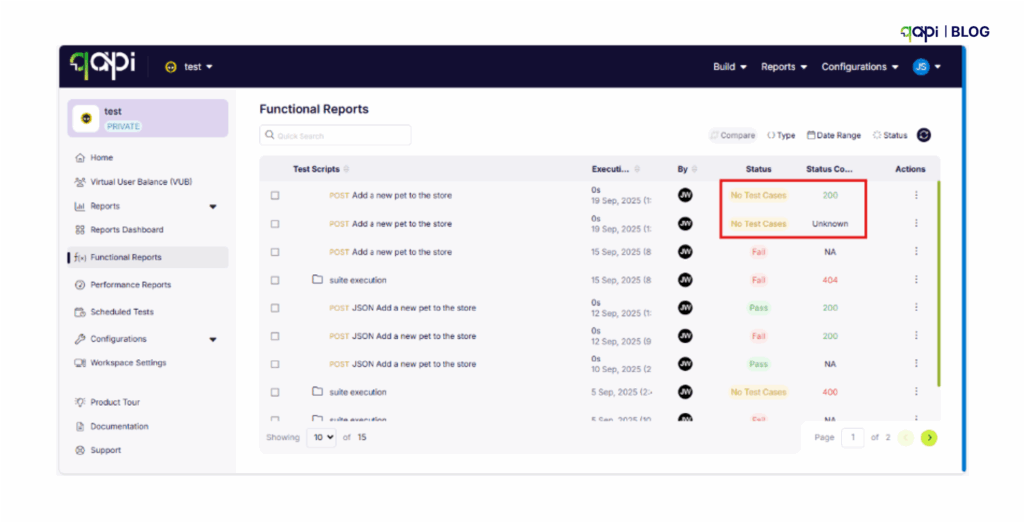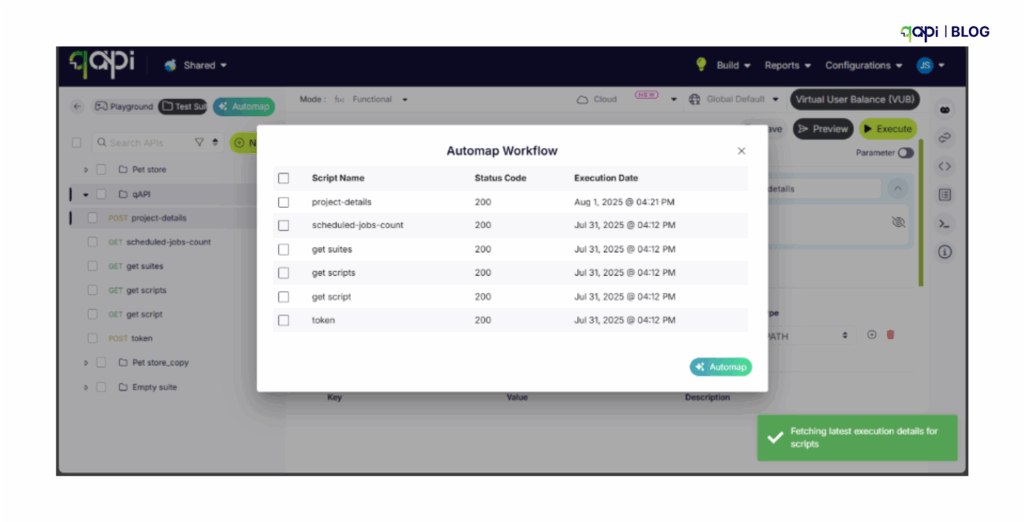If there’s one thing developers, testers, and SDETs will agree on in 2026, it’s this: API automation is no longer optional.
A API automating testing strategy is a plan that ensures the speed and reliability of your APIs , the goal is to identify high-intent issues that are most likely to hurt once the team and application grows. Whether you’re building microservices, mobile apps, or enterprise backend systems, automating your API testing process will be the most promising move you make and help you clear issues much faster.
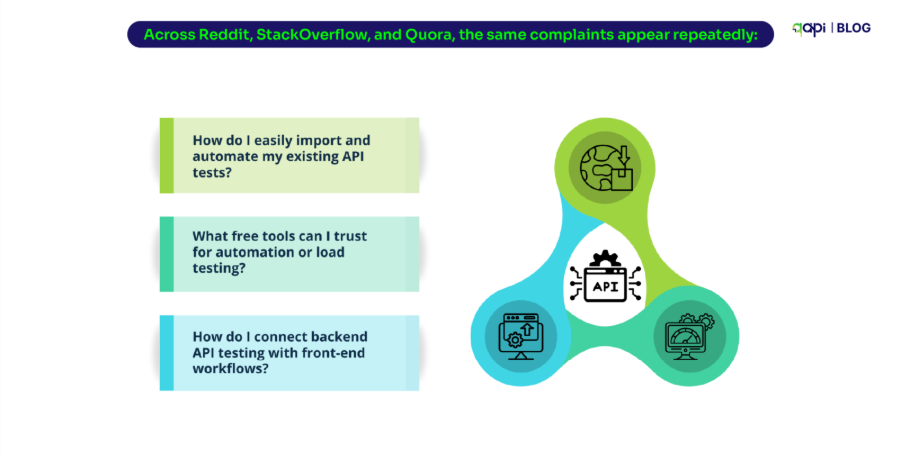
Across Reddit, StackOverflow, and Quora, the same complaints appear repeatedly:
• “How do I easily import and automate my existing API tests?”
• “What free tools can I trust for automation or load testing?”
• “How do I connect backend API testing with front-end workflows?”
This guide answers those exact questions — with real forum insights, practical workflows, tool comparisons, and how qAPI fits into modern testing stacks.
API Automation Testing Is Essential
On Reddit’s r/softwaretesting, a user recently posted: “My team spends 30% of every sprint manually testing the same API endpoints. We’re moving slow and still finding bugs in production. Is this normal?”
The answer is: it’s common, but it’s not normal.
What users get wrong is that API automation isn’t just about “testing faster.” It’s about building a safety net that allows your team to work efficiently.
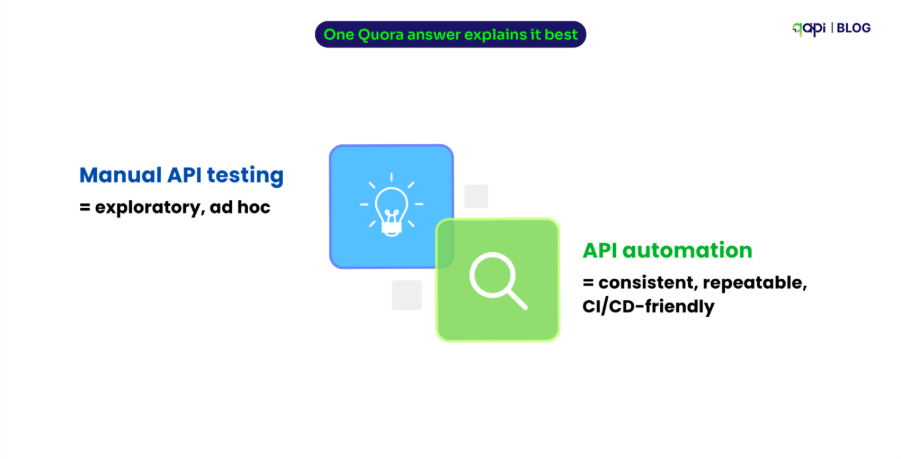
One Quora answer explains it best:
• Manual API testing = exploratory, ad hoc
• API automation = consistent, repeatable, CI/CD-friendly
This distinction matters because teams that rely only on manual tests are shipping blind. If we compare it to the release velocity teams globally are working towards, that’s a deal-breaker.
The transition from manual-heavy testing to API-first automation isn’t just a surfacing now; it’s a response to deep architectural and workflow changes happening across the software industry for more than a decade.
1️⃣ Microservices Usage are Exploding
Current systems we develop and use are no longer monolithic. They’re divided into dozens or hundreds of microservices, and every service exposes multiple APIs. Which clearly means:
More endpoints, More integrations, More dependencies, More failure points
A single release can impact 15–30 upstream or downstream services — something manual testing cannot reliably validate. So, it’s just poetic that API testing automation becomes the only scalable way to maintain confidence across distributed systems.
2️⃣ CI/CD Pipelines Demand Fast, Stable Feedback
Companies are moving toward high-frequency deployments, and CI/CD pipelines expect tests to run faster without any human intervention.
Manual API tests simply do not fit into the CI/CD loop.
3️⃣ AI-Generated Code Introduces New Types of Hidden Risk
With Copilot, Replit AI, Lovable, and LLM-based code generation tools everywhere, teams are shipping more code, faster — but not always more reliable code.
AI-generated functions often introduce:
• unhandled edge cases
• silent schema drift
• subtle regressions
• missing validation logic
Without an API testing automation tool, these issues will show up late in QA or worse — in production.
4️⃣UI Tests Can’t Handle Modern Complexity
Teams everywhere have learned the hard way that relying on UI tests for backend validation leads to slow execution and late-stage bug discovery.
As systems become more distributed, UI tests reveal symptoms, not root causes. API tests go deeper by validating logic at the source, reducing the cost and complexity of debugging.
API Load Testing Methods — What Users Ask & Need
Performance testing is one of the most searched API topics on Reddit’s r/devops and r/softwaretesting.
We saw the recurring questions:
❓ “How do I simulate 1k–50k virtual users?”
❓ “What’s the best way to integrate load tests into CI/CD?”
❓ “How do I track p95 / p99 latency under heavy traffic?”
Traditional vs Modern Load Testing
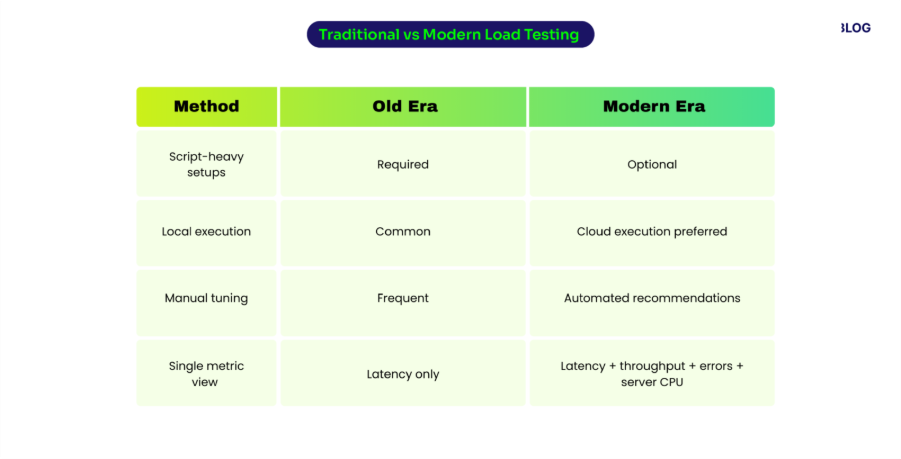
Users often confuse peak vs spike load (a top-ranking question on multiple forums).
• Peak load = sustained high traffic
• Spike load = sudden unexpected traffic burst
Load testing is no longer optional— it’s essential for mobile-heavy APIs, fintech apps, e-commerce, and B2B SaaS workflows.
The Import Advantage — The Fastest Way to Kick-Start API Automation
When teams search for the best import API testing tools for software testing, they’re all looking for the same thing: “How do I move fast without rebuilding everything from scratch?”
And honestly, that’s the biggest psychological barrier in API automation today.
You’ll see it everywhere on Reddit, Slack groups, and testing forums — people frustrated because they’ve already built hundreds of requests inside Postman, Swagger, or cURL… and now every “new tool” expects them to rebuild those tests manually.
That’s not just tedious. It’s demotivating. It’s why so many teams delay automation for months.
Import-based automation tool qAPI eliminates that.
Why Import Features Matter More Than Ever in 2025
Currently, teams don’t have the time and bandwidth to start from zero. They need automation now — and the fastest path is through smart importing.
“How do I import Postman or Swagger collections directly into my automation tool?”
This is the #1 question asked across Quora, Reddit, and Stack Overflow.
Today’s API automation testing tools come with native import support. You upload a Postman file, OpenAPI spec, Swagger doc, or even a cURL snippet — and the tool instantly generates your test suite.
“Can I re-use existing API tests without manual reconfiguration?”
This is where great tools stand apart from the merely “popular import API testing tools.”
Basic import = list of endpoints. Smart import = usable, runnable workflows.
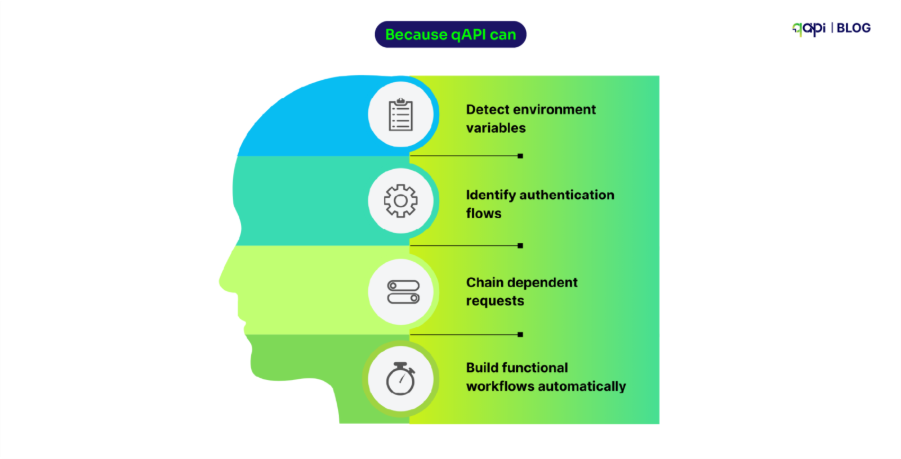
Because qAPI can:
• Detect environment variables
• Identify authentication flows
• Chain dependent requests
• Build functional workflows automatically
This is why testers say importing API specs cuts setup time by up to 60%.
And that’s why qAPI’s import features are now the defining safeguards of the best import API testing tools for software testing.
Why Import + Automation = A Strategic Advantage
Importing clubbed along with Automation it’s what makes large-scale API automation realistic for small and large teams alike.

A smart import system will help you:
• Launch automation in hours, not months
• Avoid rewriting years of Postman work
• Maintain consistent test coverage across microservices
• Accelerate regression testing
• Automatically support CI/CD pipelines
For busy QA teams, this is the difference between falling behind releases and being ahead of them.
How You Should Solve the Biggest User Pain Points
Every pain point testers mention online led to a specific design choice in modern platforms — especially unified, smart-import tools. Here are some of the major one’s that will help you out.
Pain Point #1: “I’m a manual QA, and I don’t know how to code.”
Many subscribers say this is what stops them from trying automation.
The Solution: Use a 100% no-code visual builder where workflows feel more like user journeys than scripts. If you can describe a scenario, you can automate it.
Pain Point #2: “We have years of Postman collections. Migration will take forever.”
This is the fear that blocks API automation from even starting.
The Solution, Import everything in qAPI:
• Postman
• OpenAPI
• Swagger
• cURL
• JSON definitions
AI converts those imports into clean, maintainable workflows — in minutes, not weeks.
Pain Point #3: “We use one tool for functional tests and another for load tests.”
This fragmentation is one of the most common frustrations in online communities.
The Solution: qAPI is a unified platform where you can:
1️⃣ Build a functional test
2️⃣ Add virtual users
3️⃣ Instantly turn it into a load test
One workflow. Multiple testing modes. Zero duplication.
This solves a major market gap that current tools miss and aligns perfectly with how fast paced engineering teams work.
Why This Matters for You
If you’re a QA lead, tester, or developer, here’s the real benefit:
You finally get time back. You finally get clarity. You finally get automation that feels doable, not daunting.
With qAPI the Import capabilities remove the intimidation factor from API automation. Unified workflows eliminate juggling multiple tools. And the No-code features remove the fear of getting left behind.
This is why testers today look specifically for:
• API automation testing tools with strong import support
• Popular import API testing tools that reduce setup time
• API load testing methods that reuse the same workflows
Free import API testing tools for software testing to get started quickly
The industry is shifting. Tools are evolving. So is qAPI to help with your growing needs And teams that adopt import-first automation gain speed, consistency, and quality — all without burning out their testers.
How qAPI Solves the Biggest Pain Points
Based on Reddit threads and user conversations, qAPI stands out for solving:
1️⃣ No-code automation workflows
Testers without scripting expertise can automate and build end-to-end flows.
2️⃣ Full import support
Postman, Swagger, OpenAPI, Insomnia, cURL — all in one platform.
3️⃣ Integrated load testing
You can start with free virtual users, analyze p95/p99 latency, and correlate client and server metrics. You can refine your testing further by adding as many virtual users as you can.
4️⃣ AI assistance
Generate tests, validate responses, detect missing parameters, catch schema drift.
5️⃣ Unified dashboards
Automation + load + regression all in one place. Users get detailed information for each and every test they run helping them understand the API performance stretched over a period of time.
Conclusion: Why qAPI Is Built for 2025 API Automation Needs
Here’s what the teams in API landscape in 2025 demand for:
• Faster releases
• Scalable automation
• Powerful load testing
• Seamless imports
• AI-assisted efficiency
Whether you’re migrating Postman suites, handling high-traffic microservices, or scaling test automation across teams, qAPI unifies everything — import, automation, load, and AI — in a single platform.
It’s built for testers who want to do more with less friction. It’s built for devs who want CI/CD-ready pipelines. It’s built for teams who want a true API-first testing strategy.
FAQs Inspired by Real Searches on Reddit, Quora & StackOverflow
1️⃣ How do I automate API regression tests using Postman imports?
Import your Postman collection → auto-generate test suites → configure assertions → schedule runs in CI/CD. qAPI supports this.
2️⃣ Are AI-based API automation helpers reliable?
AI-based assistants excel at generating tests, identifying missing assertions and detecting schema changes. They’re not perfect, but with qAPI, you can drastically reduce manual effort.
3️⃣ How do I troubleshoot flaky API load tests?
Check dynamic parameters, rate limiting, server throttling and environment instability. qAPI can visually correlate error spikes with server metrics to isolate root causes faster.
4️⃣ How do I schedule imported API tests in CI/CD pipelines?
Two options:
• CLI/automation runner tools
• Native CI plugins (GitHub Actions, GitLab, Jenkins)
Most modern AI-driven platforms, including qAPI, provide both.
